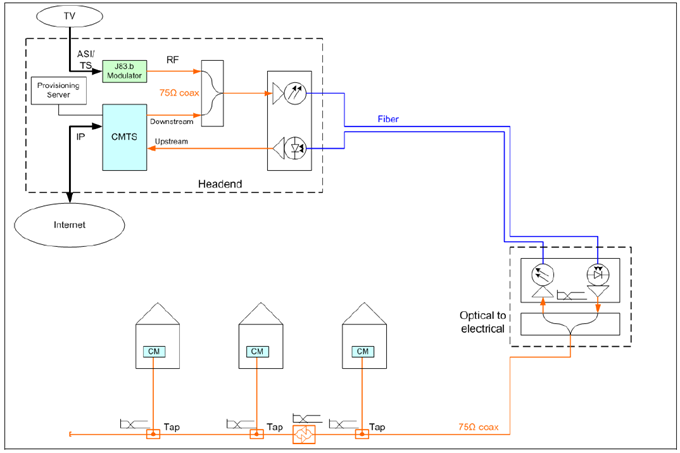EPM Integrated DOCSIS architecture
The EPM Solution makes use of the following components:
- Collector connectors: These connectors take care of technology-specific data collection and initial processing.
- Back-end connectors: These connectors take care of technology-specific aggregation of the data from the collector connectors.
- Front-end connector: This connector takes care of technology-agnostic data presentation. It allows users to view KPIs and other information based on the data received from the back-end connectors.
- System connectors: These connectors are designed to operate as peripherals within the EPM Solution.
%%{init: {'flowchart':{'curve':'monotoneY'}}}%%
flowchart TB
subgraph Integrated DOCSIS architecture
direction TB
style Front-End fill:#00aff0
style Back-End fill:#00517d
style CM-Collector fill:#898989
style CCAP fill:#898989
Front-End(front end) <--> Back-End(back end)
Back-End(back end) <--> CM-Collector(CM collector)
Back-End(back end) <--> CCAP(CCAP collector)
end
Collector connectors
At the core of the solution are collector connectors capable of interfacing with any physical or virtual data source (devices, APIs, etc.).
In a typical Integrated DOCSIS deployment, there are various types of service-delivery entities such as CMTSs, Fiber and Optical Nodes, and cable modems (CMs).

The EPM Solution integrates with these entity types, regardless of technology or vendor, via specific or generic connectors. These "collector" connectors operate at the lowest level of the EPM Solution. The connectors are optimized for data gathering and initial processing. Parameters stored at this level typically correspond to direct readings from data sources.
One or more collector elements are placed on a DMA, and they are locally managed by the corresponding back-end elements.
Back-end connectors
Back-end connectors take care of the aggregation of KPIs (Key Performance Indicators) and KQIs (Key Quality Indicators) of all topology levels above CPE (the lowest level) and below Network (the highest level).
One or more back-end elements, per technology, are placed on a DataMiner Agent (DMA). They carry out the aggregation logic in an independent and distributed fashion for all collectors placed on the DMA. In a system with multiple markets and hubs, for example, aggregations for a specific Hub are handled by a specific back-end element.
Front-end connector
The front-end connector allows the user to access all information from the EPM Solution from a single pane of glass. It is a lightweight connector that only contains the visual structure of the solution. It is optimized for aggregation at the highest level (Network) of the topology.
There is only one front-end element per DataMiner System, and it is aware of the existence of all collectors and back-end elements. To create reports or dashboards, this front-end element should be used.
System connectors
System connectors are designed to operate as peripherals within the EPM Solution. Some system connectors interface with specific data sources and feed information into the logic of the main connectors (i.e. the collector, back-end and front-end connectors). Other system connectors perform logic required for the execution of specific workflows.
System elements (running system connectors) are typically distributed per DMA to ensure self-contained functionality.